If you’ve been hunting for the perfect Korean skincare routine for combination skin, you’re definitely not alone. Many of us deal with the frustrating reality of oily foreheads and noses paired with dry or flaky cheeks.
This makes choosing products tricky — use something too rich, and your T-zone shines like glass; go too light, and your cheeks feel tight. That’s where korean skin care truly shines: it’s all about balance, hydration, and layering products in a smart, customizable way.
In this article, we’ll explore exactly how to design a Korean skincare routine for combination skin that gives you year-round results. We’ll dive deep into the famous 10 step korean skin care system, explore budget-friendly recommendations, and reveal some of the most effective korean beauty secrets that anyone can use.
Whether you’re completely new to K-beauty or you’ve dabbled in sheet masks before, this guide will show you how to achieve glowing, healthy skin without overspending.
Table of Contents
What Exactly Is Combination Skin?
Combination skin is one of the most common — yet most misunderstood — skin types. It actually mixes two or more skin actions on different parts of your face. Here are the usual signs:
• Oily T-zone: Forehead, nose, and chin tend to produce excess oil and shine.
• Dry or normal cheeks: The outer parts of the face feel tight, flaky, or dull.
• Breakouts + dryness: Pimples pop up in oily areas while cheeks may peel in winter.
• Uneven texture: Pores look large in some zones but invisible in others.
This dual nature makes skincare confusing. Products designed for oily skin can worsen dryness, while rich creams for dry skin can clog pores in the T-zone. The magic of korean skin care lies in its ability to address these two needs simultaneously with gentle, layered products.
Why Korean Skincare Works So Well for Combination Skin
The Korean skincare routine for combination skin isn’t just about pampering — it’s a science-backed, centuries-refined approach. Here’s why it works:
1. Hydration First – Instead of using strong alcohols to dry out oiliness, Korean products aim to keep the skin hydrated and balanced. Well-hydrated skin naturally regulates oil better.
2. Lightweight Textures – Essences, gels, and watery toners feel refreshing, not heavy. Perfect for oily zones that hate heavy creams.
3. Layering Philosophy – Thin, buildable layers allow you to target specific areas with precision. You can use a hydrating essence all over, then a niacinamide serum only on the T-zone.
4. Nature Meets Innovation – Ingredients like green tea, rice water, snail mucin, and centella are staples of korean beauty secrets — gentle but effective.
5. Prevention Over Cure – Instead of waiting for breakouts or flakiness to show, Korean skincare emphasizes daily routines that prevent problems before they happen.
In short, the Korean skincare routine for combination skin is flexible, thoughtful, and kind to your skin.
Breaking Down the 10 Step Korean Skin Care Routine
The legendary 10 step korean skin care routine can seem intimidating at first, but don’t worry — you don’t have to do all 10 steps every single day. Think of it as a menu you can adapt to your skin’s needs. For combination skin, the routine becomes your toolkit for balancing oil and hydration.
Let’s walk through each step in detail:
Step 1: Oil-Based Cleanser
The double cleanse is a hallmark of Korean skincare routine for combination skin. Oil cleansers effectively break down makeup, sunscreen, and excess sebum better than any other product. For combination skin, choose a lightweight oil cleanser that rinses clean and won’t clog pores, ensuring a thorough yet gentle cleanse.
💡 Expert Tip: Even oily zones need oil cleansing — oil dissolves oil more effectively than water-based products alone.
Budget Pick: The Face Shop Rice Water Bright Cleansing Oil — affordable, gentle, and made with rice water, a traditional Korean secret for radiant skin.
This type of Korean face wash for combination skin is a must-have first step if you apply SPF or makeup every day.
Step 2: Water-Based Cleanser
The second cleanse makes sure there’s no remaining oil or dirt left behind. Combination skin does best with gentle, low-pH cleansers that clean without over-drying.
Budget Pick: COSRX Low pH Good Morning Gel Cleanser — gentle, calming, and affordable.
💡 Expert Tip: If your cheeks are feeling dry, massage cleanser only on the T-zone and rinse quickly on the cheeks to prevent tightness.
Step 3: Exfoliation (2–3 Times a Week)
Exfoliation keeps pores clear in oily areas while smoothing dry patches. For combination skin, it’s best to use mild exfoliants like rice scrubs, lactic acid, or BHA toners. Incorporating these into your Korean skincare routine for combination skin helps balance your skin and improve overall texture.
Budget Pick: Skinfood Rice Mask Wash Off — a cult classic that brightens without irritation.
💡 Expert Tip: Apply exfoliant mainly to the T-zone and gently sweep over the cheeks once a week. Avoid over-exfoliating, as it can trigger oil production and worsen dryness simultaneously.
Step 4: Toner
Unlike Western toners, which often strip the skin, Korean toners hydrate and prep the skin for the next steps. For combination skin, go for watery, refreshing toners.
Budget Pick: Isntree Green Tea Fresh Toner — balances oil while soothing dry areas with green tea antioxidants.
💡 Expert Tip: Apply multiple thin layers of toner on cheeks if they’re extra dry. Use just one layer on the oily T-zone.
Step 5: Essence
Essences are the backbone of the Korean skincare routine for combination skin. They’re more moisturizing than toners but less thick than serums. For combination skin, this is where the magic really happens because essences restore hydration without heaviness.
Budget Pick: COSRX Advanced Snail 96 Mucin Power Essence — one of the best affordable products in the K-beauty world. It heals dry patches while calming oil-prone areas.
💡 Expert Tip: Press essence into your skin with your palms rather than using cotton pads. This ensures maximum absorption.
Step 6: Serum or Ampoule
This is where you can customize based on what your skin needs most. Combination skin usually struggles with enlarged pores, oiliness, and dullness, while also needing hydration.
• For oily T-zone: Look for serums with niacinamide, BHA, or green tea.
• For dry cheeks: Opt for hyaluronic acid or panthenol.
• For a glowing appearance: Vitamin C can help lighten your skin and make it look more uniform.
Budget Pick: Some By Mi Niacinamide Serum — controls oil, reduces pores, and helps prevent breakouts.
💡 Expert Tip: You don’t need to put the same serum all over your face. Use oil-control serums on the T-zone and a good hydrating serums on the cheeks.
Step 7: Sheet Mask (1–2 Times a Week)
Sheet masks are one of the most enjoyable parts of korean skin care. They provide a surge of hydration and nutrients. For combination skin, alternate between masks: one week use a hydrating mask with hyaluronic acid, the next week a clarifying one with tea tree. Incorporating these into your Korean skincare routine for combination skin helps maintain hydration while controlling oil and blemishes effectively.
Budget Pick: Etude House 0.2mm Therapy Air Masks — affordable and available in many variations.
💡 Expert Tip: Do not throw the remain serum in the packet—you can use it onto your neck, chest, or hands for extra advantage from it.
Step 8: Eye Cream
Combination skin doesn’t usually mean combination under-eyes — almost everyone benefits from a lightweight but hydrating eye cream. Look for brightening or anti-aging options.
Budget Pick: Mizon Snail Repair Eye Cream — light to wear, affordable, and packed with snail mucin to keep the skin hydrated.
💡 Expert Tip: Use your ring finger to gently press the eye cream around your eyes for best results. Don’t pull or tug the skin under your eyes beacuse it is too sensitive.
Step 9: Moisturizer
Moisturizer is essential in the korean skincare routine for combination skin because it locks in all the hydration you’ve layered in previous steps. But here’s the trick: not all areas of your face need the same kind of moisture.
• For oily T-zone: Lightweight gel or water-based creams work best.
• For dry cheeks: Creamier textures with ceramides or shea butter are more effective.
💡 Expert Tip: Don’t hesitate to use two different moisturizers if needed — gel on the oily areas, cream on the dry patches.
Budget Pick: Etude House Soon Jung Hydro Barrier Cream — affordable, soothing, and perfect for sensitive combination skin.
Step 10: Sunscreen
No Korean skincare routine is complete without applying sunscreen. Sun exposure worsens both oiliness and dryness while accelerating aging. A broad-spectrum sunscreen is your shield.
For combination skin, choose sunscreens that feel weightless but still protect effectively.
Budget Pick: Beauty of Joseon Relief Sun: Rice + Probiotics SPF 50+ — lightweight, hydrating, and doesn’t leave a white cast.
💡 Expert Tip: Reapply suncreen after every 2–3 hours if you’re outdoors. Korean sunscreens often come in stick or cushion formats that make reapplication convenient.
Morning vs. Night Routine for Combination Skin
The 10 step korean skincare routine for combination skin feel overwhelming if you try to do it twice daily. Here’s a realistic way to divide it:
• Morning Routine:
○ Cleanser (gentle)
○ Toner
○ Essence
○ Serum (vitamin C for glow)
○ Moisturizer
○ Sunscreen
• Night Routine:
○ Double Cleanse (oil + water-based)
○ Toner
○ Essence
○ Serum (hydrating or niacinamide)
○ Sheet Mask (optional)
○ Eye Cream
○ Moisturizer
💡 Expert Tip: Think of mornings as protection and nights as repair.
How to Adjust the Routine Throughout the Year
One reason the korean skincare routine for combination skin is so effective is because it’s flexible. Combination skin behaves differently in winter and summer, so your routine should adapt.
• Summer: The skin in the T-zone is easy to get oilier. Switch to gel moisturizers, lighter serums, and mattifying sunscreens.
• Winter: Cheeks and outer skin might feel tight and very dry. Use richer moisturizers and calming sheet masks to help with dryness.
This adaptability is one of the underrated korean beauty secrets that keeps skin glowing all year round.
Common Mistakes to Avoid
Even the best korean skincare routine for combination skin can go wrong if you make these mistakes:
1. Using harsh foaming cleansers – Stripping oil too aggressively leads to rebound oiliness.
2. Over-exfoliating – Using too much exfoliant doesn’t mean you get better results. Twice a week is enough.
3. Skipping sunscreen – All your efforts are wasted without daily SPF.
4. Applying heavy creams all over – Your T-zone doesn’t need the same care as your cheeks.
5. Not patch testing new products – Korean skincare is gentle, but introducing multiple products at once can still overwhelm your skin.
Budget-Friendly Korean Face Wash for Combination Skin
If you’re shopping on a budget, cleansers are the best place to save without compromising quality. Affordable korean face wash for combination skin options include:
• COSRX Low pH Good Morning Cleanser – balances oil and dryness.
• Innisfree Green Tea Foam Cleanser – antioxidant-rich and refreshing.
• The Face Shop Rice Water Bright Cleanser – brightens dull skin affordably.
Lifestyle Habits That Complement Korean Skincare
Skincare doesn’t end at products. To maximize the benefits of the korean skincare routine for combination skin, consider:
• Diet: Hydrating foods like cucumbers, watermelon, and green tea (a staple of Korean culture) help skin glow.
• Sleep: Quality rest is one of the oldest korean beauty secrets for healthy skin.
• Stress Management: Stress hormones often worsen both oiliness and dryness. Meditation, yoga, or journaling can help.
• Consistency: The main key is to keep following all the steps without skipping. Even budget-friendly products work if you use them regularly.
Tailoring Your Routine to Skin Concerns
Combination skin isn’t just about oil and dryness — it often overlaps with acne, sensitivity, or dullness. Here’s how to adjust:
• If acne-prone: Add salicylic acid or tea tree serums to the T-zone.
• If sensitive: Stick with soothing products like centella or madecassoside.
• If dull: Incorporate vitamin C essence or brightening sheet masks.
The beauty of the korean skincare routine for combination skin is that it lets you adapt every step.
Wrapping It Up
The korean skincare routine for combination skin is not about blindly following 10 steps every day — it’s about understanding your skin’s needs and using the right products at the right time. With lightweight layers, customizable steps, and an emphasis on hydration, you can finally balance your oily and dry areas in harmony.
So, whether you’re new to K-beauty or upgrading your routine, remember: skincare is self-care, and glowing skin is the reward of patience, balance, and smart product choices. Focus on the Korean skincare routine for combination skin to achieve the best results.
If you’re searching for effective ways to manage your combination skin, be sure to read my latest blog post titled, “Korean Skincare Routine for Combination Skin: How to Customize Your Routine for Optimal Results”. This comprehensive guide offers tailored tips on how to adapt your skincare routine to suit your unique skin needs.
With a focus on the best Korean skincare products and techniques, you’ll learn how to balance oily and dry areas for a healthier, more radiant complexion. Dive into expert advice and discover the perfect Korean skincare routine for combination skin that delivers visible results.
Frequently Asked Questions (FAQs)
What is the 1% rule in skincare?
It suggests that active ingredients like niacinamide or salicylic acid should be used at around 1% concentration for safe, effective results, which is often recommended in a korean skincare routine for combination skin.
What is the 7 layer method of skincare?
This method involves applying multiple layers of hydrating products like toner, essence, and serum to flood the skin with moisture. It works well for dry or dehydrated skin but can be adapted for Korean skincare routine for combination skin by focusing on hydration in dry zones and matte finishes in oily areas.
How do Japanese wash their face?
Japanese skincare emphasizes gentle cleansing with lukewarm water and mild cleansers, often double cleansing, which is also a core principle in korean skincare routine for combination skin.
Is snail mucin good for combination skin?
Yes, snail mucin is known for its healing and hydrating properties. When used appropriately, it can benefit the Korean skincare routine for combination skin by soothing dry patches and controlling excess oil in oily zones.
What is the best Korean skincare routine for combination skin?
The best routine is personalized but generally includes gentle cleansing, balancing toner, targeted serums, moisturizer, and sun protection. For Korean skincare routine for combination skin, selecting products that address both oily and dry areas is essential to achieve balanced, healthy skin.
Which face wash is best for combination skin?
Look for pH-balanced, gentle cleansers like Innisfree Green Tea Foam Cleanser, which effectively cleans without stripping moisture. This is essential for a Korean skincare routine for combination skin, ensuring your skin stays fresh and balanced.

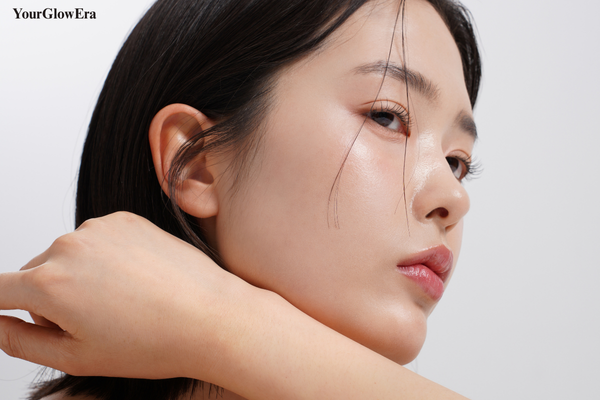


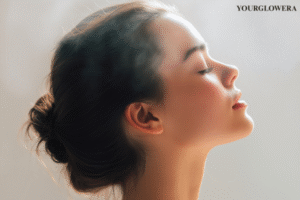
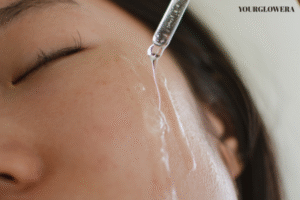
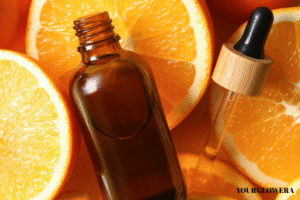
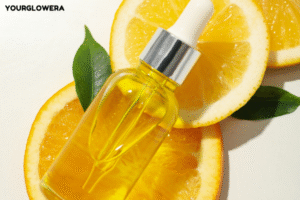
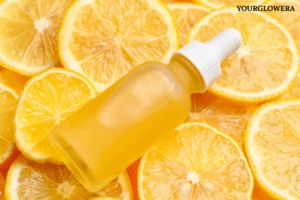
Leave a reply